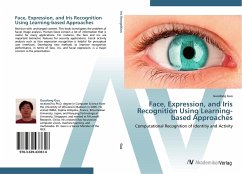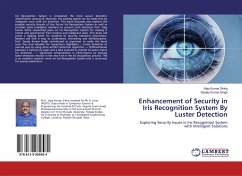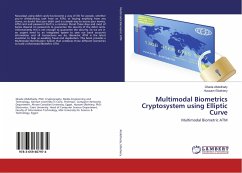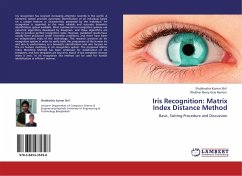The increasing demand for enhanced security in the
daily life has directed the improvement of the
reliable and intelligent personal identification
system based on biometrics. Iris recognition has
been regarded as one of the most reliable biometrics
technologies in recent years. In this book, an iris
recognition scheme is presented as a biometrically
based technology for person identification using
Multi-Class Support Vector Machines (SVM). The Multi-
Objectives Genetic Algorithms (MOGA) is used to
select the most significant features in order to
increase the matching accuracy. The traditional SVM
is modified into an asymmetrical SVM to treat the
cases of False Accept and False Reject differently
and also to control the unbalanced data of a
specific class with respect to the other classes. In
order to improve the generalization performance of
SVM, the optimal values of SVM parameters are
selected. The experimental results indicate that the
proposed iris recognition scheme can be applied to a
wide range of security-related application areas
with an encouraging recognition rate.
daily life has directed the improvement of the
reliable and intelligent personal identification
system based on biometrics. Iris recognition has
been regarded as one of the most reliable biometrics
technologies in recent years. In this book, an iris
recognition scheme is presented as a biometrically
based technology for person identification using
Multi-Class Support Vector Machines (SVM). The Multi-
Objectives Genetic Algorithms (MOGA) is used to
select the most significant features in order to
increase the matching accuracy. The traditional SVM
is modified into an asymmetrical SVM to treat the
cases of False Accept and False Reject differently
and also to control the unbalanced data of a
specific class with respect to the other classes. In
order to improve the generalization performance of
SVM, the optimal values of SVM parameters are
selected. The experimental results indicate that the
proposed iris recognition scheme can be applied to a
wide range of security-related application areas
with an encouraging recognition rate.








